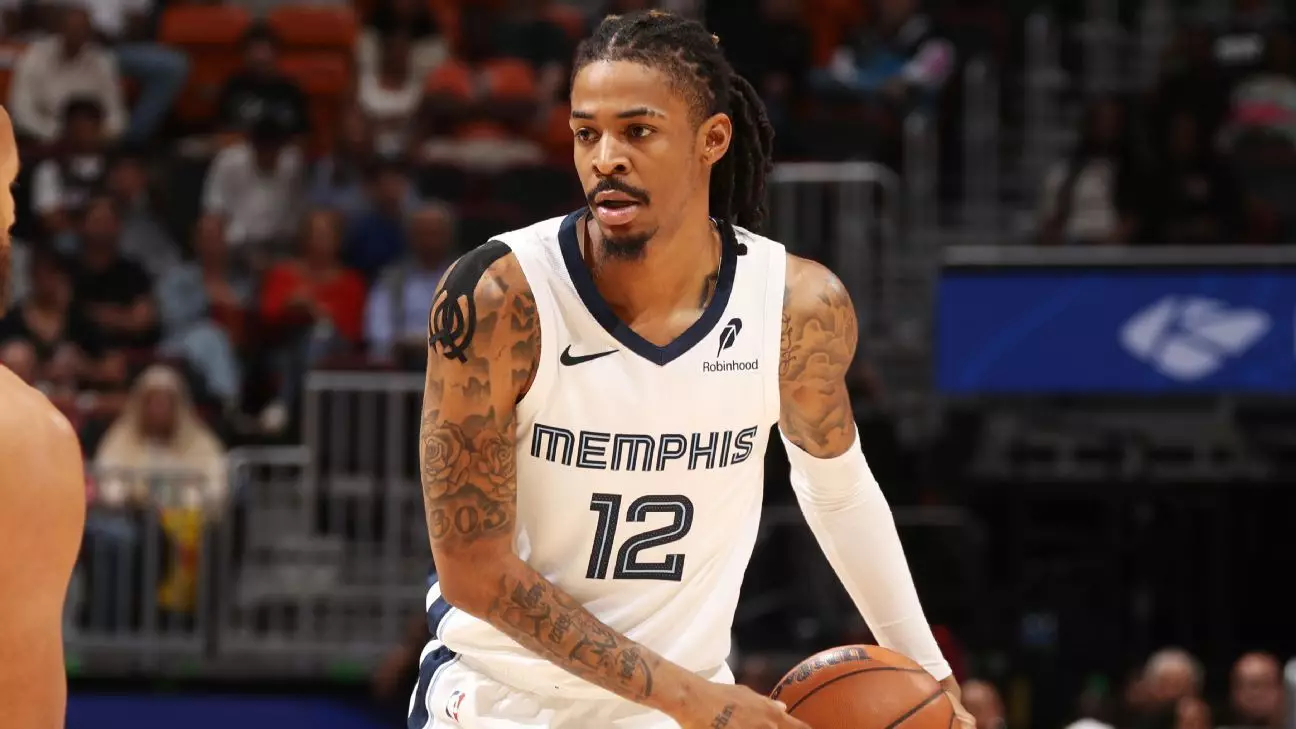In the competitive world of professional sports, the line between celebration and inappropriateness can sometimes blur, as seen in the recent antics of Memphis Grizzlies guard Ja Morant. Following his noteworthy performance against the Miami Heat, where he secured a thrilling buzzer-beater, Morant’s celebratory gesture of mimicking shooting a gun with his finger reignited discussions around athlete behavior and accountability. Despite the playful intent, such actions come laden with consequences, particularly considering Morant’s past incidents involving firearms.
Morant’s three-pointer showcased his undeniable talent, yet the subsequent gun gesture raised eyebrows and ruffled feathers within the NBA community. His actions were reminiscent of similar warnings issued just days prior to the Golden State Warriors’ Buddy Hield, underscoring the league’s growing concern over how lighthearted celebrations may inadvertently reflect violent themes. In an era where athletes are held to higher scrutiny regarding their public personas, Morant’s choices stand out as more than just harmless fun; they provoke a discussion about the responsibilities that come with celebrity status.
The NBA’s Dilemma: Creating a Safe Environment
The NBA’s response to Morant’s gesture and its implications reveal the league’s struggle to maintain a balance between allowing players the freedom to express themselves and ensuring that such expressions do not promote harmful behaviors. The decision to issue warnings instead of harsher penalties indicates a desire to foster an environment rich in athletic expression yet sensitive to societal ramifications. The league, after all, is not just a collection of teams; it has a significant influence on culture and youth.
Morant’s past has only compounded the situation. His previous suspensions for brandishing a firearm on social media illustrate a trajectory fraught with risk, both personally and professionally. Herein lies the challenge: A player with such immense talent must navigate the heightened expectations placed upon him—not just to perform, but to act as a positive role model. The sports community is left grappling with Morant’s duality: a superstar athlete celebrated for his skills versus a young man whose actions frequently push against social boundaries.
The Wider Implications: Role Models and Accountability
This incident needs careful reflection. While many may dismiss Morant’s gesture as playful bravado typical of competitive spirit, we must consider the broader implications. In a society still wrestling with gun violence and its ramifications, actions that may seem trivial can resonate far beyond the playing court. Morant’s responsibility as a public figure is not solely to entertain but to be cognizant of his influence on younger fans who idolize him.
Ultimately, the challenge lies in distinguishing between athletic celebration and the potential glorification of violence. The conversation must evolve beyond penalties and warnings; it should aim at instilling values within athletes that go hand in hand with excellence on the court. For Morant, seizing this moment may not just be about finding victory on the scoreboard, but about redefining what it means to truly win in life—understanding the impact of one’s actions, both on and off the court.

